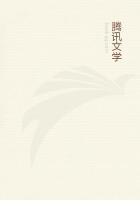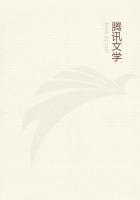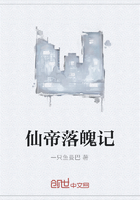INK SECRETAS OF THE TWELFTH CENTURY COMPARED WITHEARLIER ONES--APPEARANCE OF TANNO-GALLATE OF IRON INK IN THE TWELFTH CENTURY--ITS INTRODUCTIONLOCATES THE EPOCH WHEN THE MODERN INK OF TO-DAY FIRST CAME INTO VOGUE--ITS APPROVAL ANDADOPTION BY THE FATHERS OF THE CHURCH--THE INVENTION NOT ITALIAN BUT ASIATIC--ITS ARRIVALFROM ASIA FROM THE WEST AND NOT THE EAST--APPEARANCEABOUT THE SAME TIME OF LINEN OR MODERN PAPER--SETTLEMENT OF OLD CONTROVERSIES ABOUT ANCIENT SO-CALLED COTTON PAPER-DE VINNE'S COMMENTABOUT PAPER AND PAPER-MAKING--CURIOUS CONTRACT OF THE FOURTEENTH CENTURY.
THE "Secretas" of the twelfth century, in so far as they relate to methods of ****** ink, indicate many departures from those contained in the more ancient ones. Frequent mention is made of sour galls, aleppo galls, green and blue vitriol, the lees of wine, black amber, sugar, fish-glue and a host of unimportant materials as being employed in the admixture of black inks. Combinations of some of these materials are expressed in formulas, the most important one of which details with great particularity the commingling together of an infusion of nut-galls, green vitriol (sulphate of iron) and fish-glue (isinglass); the two first (tanno-gallate of iron) when used alone, forms the sole base of all unadulterated "gall" inks.
Dates are appended to some of these ink and other formulas. The "tanno-gallate of iron" one has, however, no date. But as it appears closely following a date of A. D. 1126, it must have been written about that time.
Documents, public and private, bearing dates nearly contemporary with that era, written in ink of like type, are still extant, confirming in a remarkable degree the "Secreta" formula, and establishing the fact that the first half of the twelfth century marks the epoch in which the "gall" or modern ink of today came into vogue.
Its adoption by the priests stamped it with the seal of the Church and the arrival from the West about the same period of flax or linen paper with the added fact that these assimilated so well together, later placed them both on the popular basis which has continued to the present time.
While the Secreta which contains the "gall" ink formula is of Italian origin, the invention of this ink belongs solely to an Asiatic country, from whence in gradual stages by way of Arabia, Spain and France, it finally reached Rome. Thence, through the Church, information about it was conveyed to wherever civilization existed.
We are not confined in our investigations of ancient MSS. to any particular locality or date, as the twelfth, thirteenth, fourteenth and fifteenth centuries are prolific of "gall" ink monuments covering an immense territory. Such inks when used unadulterated, remain in an almost pristine color condition; while the other inks to which some pigment or color had been added, probably to make them more agreeable in appearance and more free-flowing, with a mistaken idea of improving them, are much discolored and in every instance present but slight indications of their original condition.
The question of the character of the paper employed during these eras, composed of different kinds of fibrous vegetable substances, possesses some importance when discussing its relationship to inks. Many authors certify to the manufacture and use of "cotton"in the eleventh, twelfth and later centuries.
Madan, however, in treating this subject, makes the following comments which are in line with my own observations:
"Paper has for long been the common substance for miscellaneous purposes of ordinary writing, and has at all times been formed exclusively from rags (chiefly of linen) reduced to pull), poured out on a frame in a thin watery sheet, and gradually dried and given consistence by the action of heat. It has been a popular belief, found in every book till 1886 (now entirely disproved, but probably destined to die hard), that the common yellowish thick paper, with rough fibrous edge, found especially in Greek MSS. till the fifteenth century, was paper of quite another sort, and made of cotton (charta bombycna, bombyx being usually silk, but also used of any fine fibre such as cotton). The microscope has at last conclusively shown that these two papers are simply two different kinds of ordinary linen-rag paper."De Vinne speaking, of paper and paper-****** says:
"The gradual development of paper-****** in Europe is but imperfectly presented through these fragmentary facts. Paper may have been made for many years before it found chroniclers who thought the manufacture worthy of notice. The Spanish paper-mills of Toledo which were at work in the year 1085, and an ancient family of paper-makers which was honored with marked favor by the king of Sicily in the year 1102, are carelessly mentioned by contemporary writers as if paper-****** was an old and established business. It does not appear that paper was a novelty at a much earlier period.
The bulls of the popes of the eighth and ninth centuries were written on cotton card or cotton paper, but no writer called attention to this card, or described it as a new material. It has been supposed that this paper was made in Asia, but it could have been made in Europe. A paper-like fabric, made from the barks of trees, was used for writing by the Longobards in the seventh century, and a coarse imitation of the Egyptian papyrus, in the form of a strong brown paper, had been made by the Romans as early as the third century. The art of compacting in a web the macerated fibres of plants seems to have been known and practised to some extent in Southern Europe long before the establishment of Moorish paper-mills.















